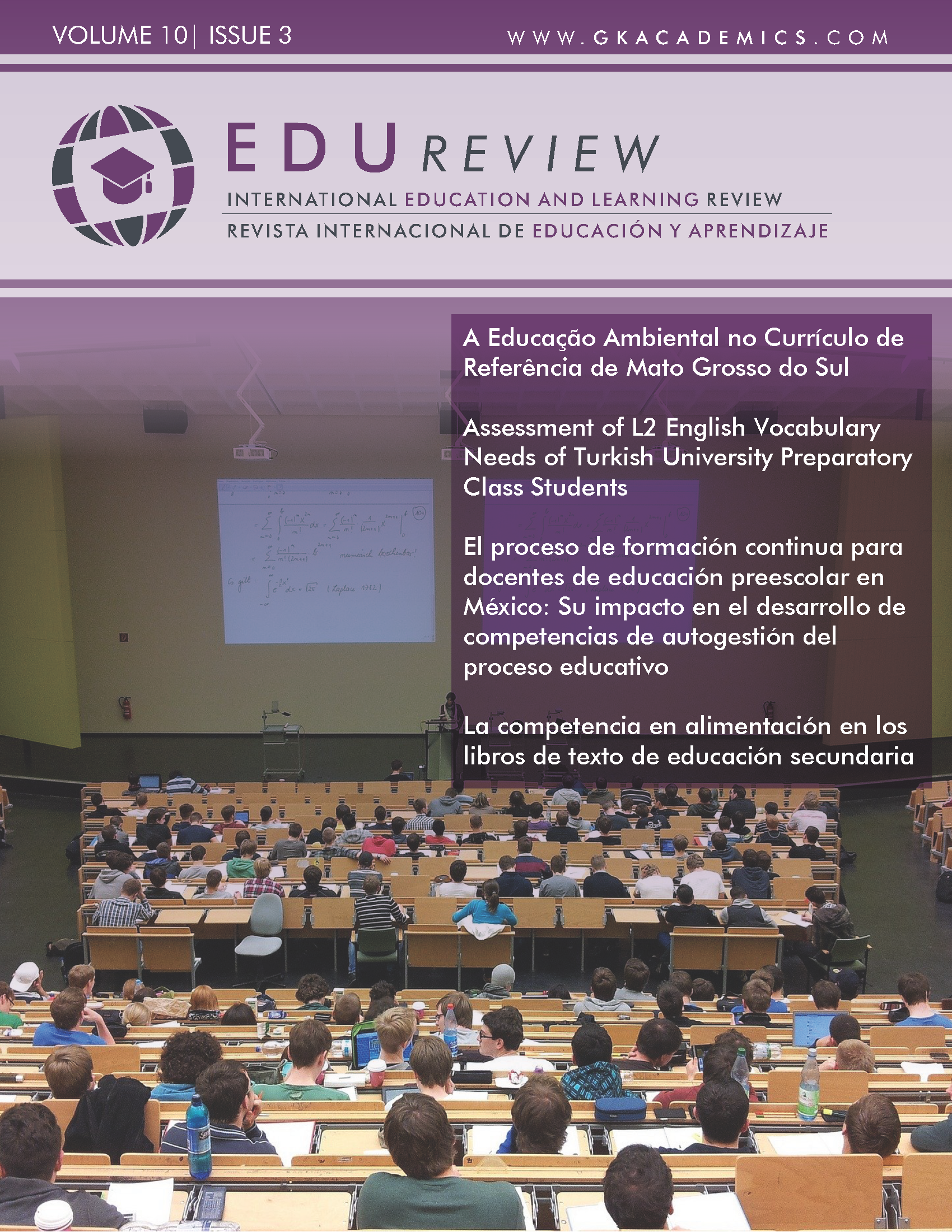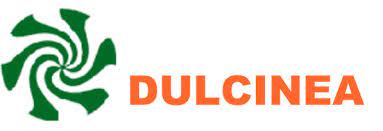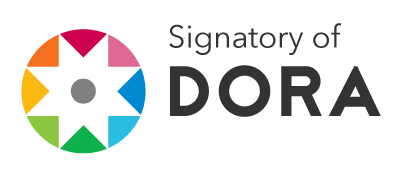COVID-19 Pandemic, Effect on Online Students that Pursue a High School Diploma
DOI:
https://doi.org/10.37467/gkarevedu.v10.3114Keywords:
Online learning, Online education, High school, Pandemic, COVID-19Abstract
The confinement during the COVID-19 pandemic increased the use of technology in various sectors, especially in education. In this work a descriptive and correlational study is presented, with a statistical analysis of 29,180 responses from students enrolled in an online program to accredit high school. The results show significant differences due to the pandemic: enrollment increased, the percentage of students who come from private high schools and those who had previously taken online courses increased; students dedicated more time to their courses, accessed more from home and spent more time on the Internet.
Downloads
Global Statistics ℹ️
|
577
Views
|
110
Downloads
|
|
687
Total
|
|
References
Adedoyin, O. B., & Soykan, E. (2020). Covid-19 pandemic and online learning: the challenges and opportunities. Interactive Learning Environments, 1(13). https://bit.ly/3LtUekW DOI: https://doi.org/10.1080/10494820.2020.1813180
Almusharraf, N., & Khahro, S. (2020). Students Satisfaction with Online Learning Experiences during the COVID-19 Pandemic. International Journal of Emerging Technologies in Learning (iJET), 15(21), 246–267. https://doi.org/10.3991/ijet.v15i21.15647 DOI: https://doi.org/10.3991/ijet.v15i21.15647
Asociación de Internet MX. (2020). 16º Estudio sobre los hábitos de los usuarios de Internet en México 2020. AIMX. https://www.asociaciondeinternet.mx/estudios/habitos-de-internet
Asociación de Internet MX. (2021). Estudio de educación en línea en México 2021. AIMX. https://bit.ly/3xLoVii
Bajaj, P., Khan, A., Tabash, M., & Anagreh, S. (2021). Teachers’ intention to continue the use of online teaching tools post Covid-19, Cogent Education, 8, 1. https://bit.ly/3NoGk4O DOI: https://doi.org/10.1080/2331186X.2021.2002130
Bozkurt, A., & Sharma, R. (2020). Emergency remote teaching in a time of global crisis due to CoronaVirus pandemic. Asian Journal of Distance Education, 15(1), i–vi. https://bit.ly/3yJA6sl
Carrillo, C., & Flores, M. A. (2020). COVID-19 and teacher education: a literature review of online teaching and learning practices. European Journal of Teacher Education, 43(4), 466-487. https://doi.org/10.1080/02619768.2020.1821184 DOI: https://doi.org/10.1080/02619768.2020.1821184
Centro Nacional de Evaluación para la Educación Superior. (2021). Bachillerato (Acredita-Bach). ¿Qué es? https://www.ceneval.edu.mx/bachillerato
Comisión Económica para América Latina y el Caribe. (2020, agosto). La educación en tiempos de la pandemia de COVID-19. https://bit.ly/37U6NZ0
De Garay, A. (2003). El perfil de los estudiantes de nuevo ingreso de las universidades tecnológicas en México. El Cotidiano, 19(122), 75-85. http://www.redalyc.org/pdf/325/32512209.pdf
De la Cruz Flores, G. y Matus Ortega D. I. (2019). ¿Por qué regresé a la escuela? Perfiles Educativos, 41(165), 8-26. https://doi.org/10.22201/iisue.24486167e.2019.165.58713 DOI: https://doi.org/10.22201/iisue.24486167e.2019.165.58713
Diario Oficial de la Federación. (2012). DOF: 09/02/2012. DECRETO por el que se declara reformado el párrafo primero; el inciso c) de la fracción II y la fracción V del artículo 3o., y la fracción I del artículo 31 de la Constitución Política de los Estados Unidos Mexicanos. https://bit.ly/3JUmgp2
Diario Oficial de la Federación. (2017). DOF: 18/04/2017. Acuerdo número 02/04/17. https://bit.ly/3Evd0GS
Dumont, G., Ya Ni, A., Van Wart, M., Beck, B., & Pei, H. (2021). The effect of the COVID pandemic on faculty adoption of online teaching: reduced resistance but strong persistent concerns. Cogent Education, 8(1). https://doi.org/10.1080/2331186X.2021.1976928 DOI: https://doi.org/10.1080/2331186X.2021.1976928
Edu, T., Negricea, C. I., Zaharia, R., & Zaharia, R. M. (2021). Factors influencing student transition to online education in the COVID 19 pandemic lockdown: evidence from Romania. Economic Research-Ekonomska Istraživanja. https://doi.org/10.1080/1331677X.2021.1990782 DOI: https://doi.org/10.1080/1331677X.2021.1990782
Education Endowment Foundation. (2020, Abril). Remote Learning. Rapid Evidence Assessment. https://files.eric.ed.gov/fulltext/ED612932.pdf
Engel, A. y Coll, C. (2022). Entornos híbridos de enseñanza y aprendizaje para promover la personalización del aprendizaje. RIED. Revista Iberoamericana de Educación a Distancia, 25(1), 225-242. https://doi.org/10.5944/ried.25.1.31489 DOI: https://doi.org/10.5944/ried.25.1.31489
Geçer, E., & Bağci, H. (2022). Examining students’ attitudes towards online education during COVID-19: evidence from Turkey (Análisis de las actitudes de los estudiantes hacia la educación en línea durante la pandemia de COVID-19. Evidencia de un estudio realizado en Turquía). Culture and Education. https://doi.org/10.1080/11356405.2022.2031785 DOI: https://doi.org/10.1080/11356405.2022.2031785
Greenhow, C., Lewin, C., & Willet, B. S. K. (2021). The educational response to Covid-19 across two countries: a critical examination of initial digital pedagogy adoption. Technology, Pedagogy and Education, 30(1),7-25. https://doi.org/10.1080/1475939X.2020.1866654 DOI: https://doi.org/10.1080/1475939X.2020.1866654
Hurtado Martín, A., Torres Rubio, R. y Ramírez Domínguez, H. (2017). Perfil sociocultural, condiciones, hábitos y técnicas de estudio de las y los estudiantes del Bachillerato Digital de la Secretaría de Educación de la Ciudad de México. Revista mexicana de bachillerato a distancia, 9(17), 166-193. http://dx.doi.org/10.22201/cuaed.20074751e.2017.17.64977 DOI: https://doi.org/10.22201/cuaed.20074751e.2017.17.64977
Instituto Nacional de Geografía y Estadística. (2020, agosto). Encuesta telefónica de ocupación y empleo (ETOE). https://bit.ly/37BkYSB
Instituto Nacional de Geografía y Estadística. (2020). Encuesta nacional sobre la disponibilidad y uso de tecnologías de la información en los hogares (ENDUTIH). https://bit.ly/3MsB6oD
Instituto Nacional para la Evaluación de la Educación. (2018). La política educativa de México desde una perspectiva regional. Instituto Nacional para la Evaluación de la Educación. https://bit.ly/3K2iHNE
Linne, J. (2021). Escolarización secundaria y tecnologías digitales en tiempos de pandemia. Espacios en Blanco. Revista de Educación, 1(32), 128-141. https://doi.org/10.37177/UNICEN/EB32-319
López Ramírez, M. y Esquivel Cordero, P. X. (2021). Caracterización de estudiantes en distintos tipos de instituciones de educación superior en México. Revista Latinoamericana de Estudios Educativos, LI(3), 71-96. https://doi.org/10.48102/rlee.2021.51.3.408 DOI: https://doi.org/10.48102/rlee.2021.51.3.408
Mathrani, A., Sarvesh, T., & Umer R. (2021). Digital divide framework: online learning in developing countries during the COVID-19 lockdown. Globalisation, Societies and Education, https://doi.org/10.1080/14767724.2021.1981253 DOI: https://doi.org/10.1080/14767724.2021.1981253
Means, B., Toyama, Y., Murphy, R., Bakia, M., & Jones, K. (2009). Evaluation of evidence-based practices in online learning: A meta-analysis and review of online learning studies. U.S. Department of Education, Office of Planning, Evaluation, and Policy Development. https://bit.ly/38u7qZP
Morfín Otero, M., González Quintanilla, C. A. y Rodríguez Gómez, H. M. (2021). Alumnos que estudian en línea para la obtención del Bachillerato: diferencias por tipo de secundaria de procedencia. EDUCATECONCIENCIA, 29(31), 167–186. https://bit.ly/39X8J3A
Oloyede, A., Faruk, N., & Raji, W. (2021). COVID-19 lockdown and remote attendance teaching in developing countries: A review of some online pedagogical resources. African Journal of Science, Technology, Innovation and Development, (1)19. https://bit.ly/3lmMoiA DOI: https://doi.org/10.1080/20421338.2021.1889768
Organización para la Cooperación y el Desarrollo Económicos. (2021). Education at a Glance 2021: OECD Indicators. OECD Publishing, Paris. https://doi.org/10.1787/19991487 DOI: https://doi.org/10.1787/19991487
Organización Mundial de la Salud. (29 de junio de 2020). COVID-19: cronología de la actuación de la OMS. https://www.who.int/es/news/item/29-06-2020-covidtimeline
Secretaría de Educación Pública. (2013). Principales cifras del Sistema Educativo Nacional, 2012-2013. https://bit.ly/3jV8TtY
Secretaría de Educación Pública. (2019). Principales cifras del Sistema Educativo Nacional, 2018-2019. https://bit.ly/3Ev8Oqo
Secretaría de Educación Pública. (2021a). Principales cifras del Sistema Educativo Nacional, 2020-2021. https://bit.ly/3OtZ4RR
Secretaría de Educación Pública. (2021b). Proceso de vacunación para el personal educativo. https://bit.ly/3K5W8r7
Secretaría de Educación Pública. (2021c). Sistema interactivo de consulta de estadística educativa. https://www.planeacion.sep.gob.mx/principalescifras/
Stewart, W. H., & Lowenthal, P. R. (2021). Experiences and Perceptions of Exchange Students Learning Online During the Covid-19 Pandemic in the Republic of Korea: An Exploratory Descriptive Study. Asian Journal of Distance Education, 16(1), 119-140. https://bit.ly/3Mt5RKb
Voelker D., Orton P., & Adams S. (2001). Statistics: CliffsQuickReview. Hungry Minds, Inc, NY. https://vdocuments.mx/statistics-cliffs-quick-review.html
Yates, A., Starkey, L., Egerton, B., & Flueggen, F. (2020). High school students’ experience of online learning during Covid-19: the influence of technology and pedagogy. Technology, Pedagogy and Education, 30(1), 59-73. https://doi.org/10.1080/1475939x.2020.18543373 DOI: https://doi.org/10.1080/1475939X.2020.1854337
Downloads
Published
How to Cite
Issue
Section
License
Those authors who publish in this journal accept the following terms:
-
Authors retain copyright.
-
Authors transfer to the journal the right of first publication. The journal also owns the publishing rights.
-
All published contents are governed by an Attribution-NoDerivatives 4.0 International License.
Access the informative version and legal text of the license. By virtue of this, third parties are allowed to use what is published as long as they mention the authorship of the work and the first publication in this journal. If you transform the material, you may not distribute the modified work. -
Authors may make other independent and additional contractual arrangements for non-exclusive distribution of the version of the article published in this journal (e.g., inclusion in an institutional repository or publication in a book) as long as they clearly indicate that the work was first published in this journal.
- Authors are allowed and recommended to publish their work on the Internet (for example on institutional and personal websites), following the publication of, and referencing the journal, as this could lead to constructive exchanges and a more extensive and quick circulation of published works (see The Effect of Open Access).













